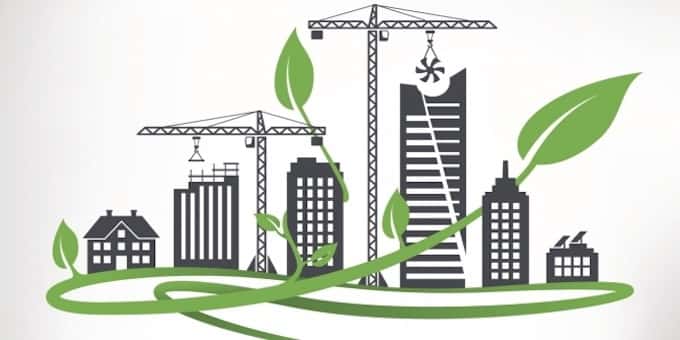Green building refers to constructing structures in an environmentally friendly and resource-efficient manner. It involves strategies like energy efficiency, water conservation, and the use of sustainable materials. For a detailed discussion, you can refer to the previous article on green building and energy efficiency.
The construction industry, being a major contributor to greenhouse gas emissions, resource depletion, and waste generation, green buildings aim to reduce these impacts by using sustainable materials and methods, energy-efficient systems, and minimizing waste. Nevertheless, there exist certain barriers that hinder the advancement of these green practices to contribute to environmental sustainability, indoor air quality and occupant health, and economic viability of buildings. By effectively addressing these barriers, stakeholders can create more resilient, healthy, and sustainable communities for current and future generations.
In this article, we explore the barriers hindering smooth and seamless integration of green building practices and discover the required steps all stakeholders need to take to annul the effect of these barriers.
Barriers to successful implementation of Green Building
Cost Considerations
One of the major challenges faced in implementation of Green building is the high upfront costs. Despite green building being an economically viable practice in the long run, the initial costs are usually high. Conventional loans also might not factor in the long-term cost savings of green buildings which makes it harder for developers to secure funding. These high initial costs discourage developers from choosing green building practices, hindering the overall growth of the sector. It also creates inequitable access as this cost barrier disproportionately affects low-income communities.
Lack of awareness and education
Many stakeholders, including developers, architects, engineers, contractors, homeowners, may have limited understanding of green building concepts, principles, and benefits. There could also be a lack of access to authentic information and resources on green building practices. Additionally, the shortage of training and professional development opportunities for construction professionals on green building principles is a limiting factor to its development. These factors can collectively lead to a reluctance to invest in sustainable building practices and spur lack of interest in green building initiatives.
Regulatory challenges
Regulatory challenges present a significant barrier to the widespread adoption of green building in Africa, hindering the region’s progress towards sustainable development. Outdated building codes and standards, lack of clear guidelines and certification systems, contribute to reluctance of developers, architects, and policy makers to embrace these green building practices.
Limited availability of Green materials and technologies
This challenge arises due to several factors including scarcity of locally sourced sustainable materials, inadequate infrastructure for manufacturing and distribution, and high import costs for green technologies. Scarcity often drives up the price of these materials and technologies making them less competitive compared to their traditional counterparts. Also limited availability can lead to supply chain disruptions, impacting projecting timelines and budgets. This strongly discourages developers from incorporating these technologies.
Perceived performance and reliability concerns
There are various perceived concerns regarding performance and reliability with green building. These concerns include durability and lifespan of green materials, maintenance requirements that may increase cost and complexity for building owners, unproven effectiveness in energy saving and reduced emissions, health and safety risks. It is important to note that these concerns are often based on misconceptions or limited information as extensive research and case studies demonstrate that well-designed and implemented green buildings can deliver excellent performance, reliability, and lifespan equivalent to, or even exceeding, conventional buildings.
Drivers of Green Building Implementation
Financial Incentives and Subsidies
Governments and financial institutions can offer financial incentives, tax credits, grants, and subsidies to encourage investment in green building projects. These incentives can help offset the initial costs associated with implementing sustainable building practices, thereby addressing the barrier of cost considerations while also incentivizing developers and homeowners to adopt green building solutions.
Education and Training Programs
Implementing comprehensive education and training programs can help raise awareness and build capacity among stakeholders in the construction industry. These programs can include workshops, seminars, certification courses, and online resources focused on green building principles, technologies, and best practices. By improving knowledge and skills, education and training initiatives address the barrier of lack of awareness and education while empowering professionals to integrate sustainable building practices into their projects effectively.
Revision of building codes and regulations
Governments can revise and update building codes, standards, and regulations to incorporate provisions for green building practices. This includes setting mandatory sustainability requirements, energy efficiency standards, and environmental performance criteria for new construction and renovation projects. By aligning regulatory frameworks with sustainability goals, governments can address regulatory challenges and create an enabling environment for green building implementation.
Promotion of Local Manufacturing and Supply Chains
Encouraging the development and expansion of local manufacturing facilities for green materials and technologies can help overcome the barrier of limited availability. Governments can support local industries through grants, subsidies, and preferential procurement policies, thereby reducing dependence on imported materials and lowering costs for builders and developers. Strengthening local supply chains also enhances resilience and fosters economic development within communities.
Public-Private Partnerships and Collaboration
Establishing partnerships between government agencies, industry associations, academic institutions, and non-profit organizations can facilitate knowledge sharing, innovation, and resource mobilization for green building initiatives. Public-private partnerships can leverage diverse expertise, funding sources, and networks to overcome barriers collectively and drive progress towards sustainability goals. Collaboration fosters synergy, enhances coordination, and promotes the adoption of holistic approaches to green building that address multiple barriers simultaneously.
While barriers present formidable challenges to the implementation of green building practices, proactive solutions exist to address these obstacles. Through the practices mentioned above, the path toward sustainable construction becomes clearer. By embracing these solutions and fostering a culture of innovation and collaboration, the construction industry can overcome barriers to green building implementation, paving the way for a more sustainable, resilient, and environmentally conscious built environment for generations to come.

